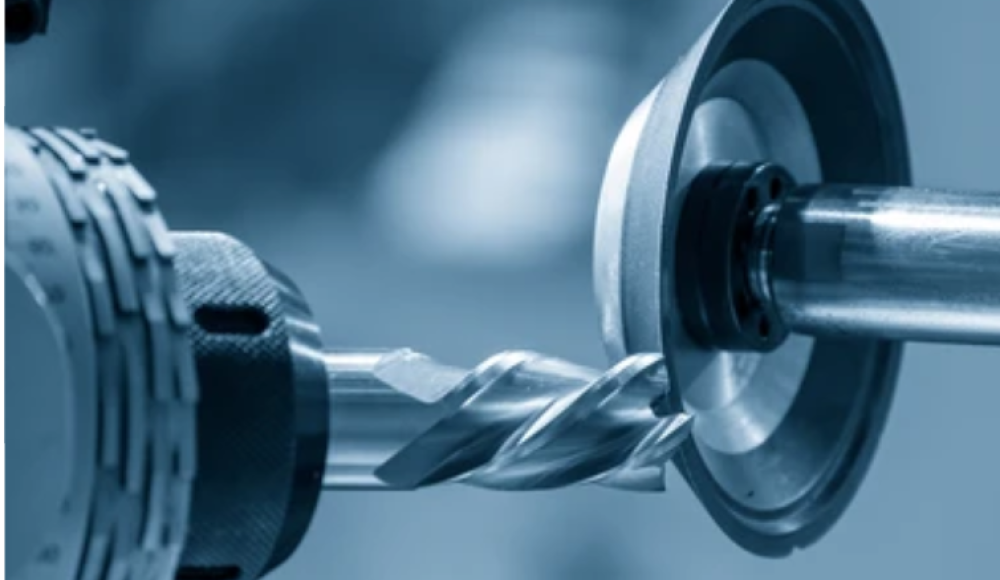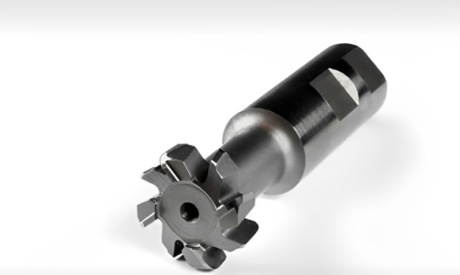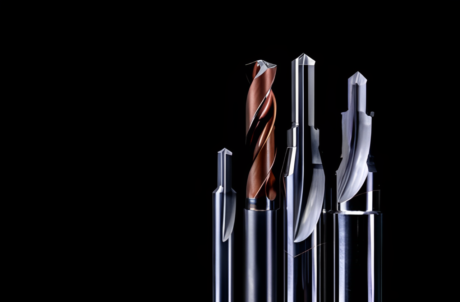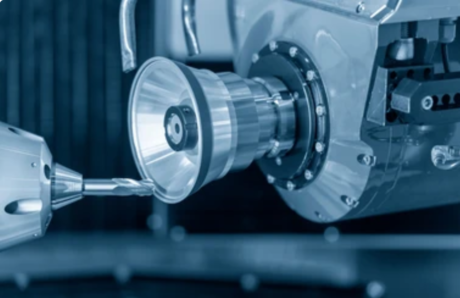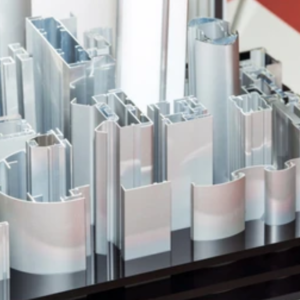Крайното фрезоване е необходим тип механична операция. Това е постигането на много различни форми, които са от съществено значение в индустриите. Той използва режещи инструменти, известни като крайни фрези, които са предназначени да елиминират материал чрез извършване на движение в различни равнини около детайла. освен това, той е скъп, но много полезен при създаването на сложни структури и фини повърхности. Така, в тази статия, ще обсъдим определението за крайно фрезоване, характеристиките на крайното фрезоване, и някои сравнения с други видове смилане. Те ще помогнат на производителя да вземе правилни решения относно използването на челно фрезоване.
Какво is Крайно фрезоване?
Крайното фрезоване е една от най-разпространените техники за машинна обработка. Тук режещите инструменти, монтирани на шпиндел, се използват за отстраняване на материала от детайла чрез тяхното въртеливо движение. Типът използван режещ инструмент се нарича челна фреза, който има режещи ръбове в края и отстрани. Те позволяват аксиално и радиално рязане на детайла. Тази операция има много приложения за оформяне на елементи като слотове, контури, профили, и дупки в различни материали. Те могат да включват метали, пластмаси, и т.н. Крайното фрезоване е важно поради голям брой предимства пред други методи. Те могат да бъдат с високо ниво на точност, гъвкавост при създаването на стръмни ръбове, и подобрен хронологичен изход. освен това, може да помогне за създаването на геометрични сложности в един цикъл.
как прави процесът на крайно фрезоване работи?
Крайното фрезоване също е друг термин, използван за крайно рязане. Включва инструмент или челна фреза, която се върти с определена скорост. След това те се подават в детайла и се използват за отстраняване на частите, които са желани в крайния продукт. Режещият инструмент има остър връх и страни, позволяващи му да реже във всички посоки. Така, това го прави много гъвкав и му позволява да прави сложни форми. Ето как работи процесът в детайли:
1. Аксиално рязане
При тази операция, челната фреза обикновено е във вертикална посока към детайла. Това има много приложения в процес, който помага да се правят вдлъбнатини като дупки или джобове върху материала. Действието на рязане е главно в крайната част на крайната фреза. Така, тя реже, докато се движи надолу със силно потапяне.
2. Радиално рязане
Тук, челната фреза се премества по равнината XY на детайла по макро начин. Това движение помага за генериране на функции като слотове, профили, или контури. Страничните режещи ръбове, разположени по страните на челната фреза, прорязват детайла, докато инструментът се премества по равнината на детайла.
3. Спирално рязане
Това е по-всеобхватно движение и тук крайната фреза може да се движи в аксиална или вертикална, както и в радиална или хоризонтална посока. Това прави възможно формирането на форми като спираловидни канали, нишки, или различни видове функции. Тези посоки на движение са в комбинация една с друга. Така, позволява създаването на геометрии, които иначе са много твърди при използване на други режещи инструменти.
Свойства на крайно фрезови машини
Крайните фрезови машини използват различни операции, i.e. челно фрезоване, профилно фрезоване, и фрезови машини за потапяне. Основните характеристики включват:
- Високоскоростни шпиндели: Използва се като инструмент, който може да се върти с висока скорост в RPM за решения за бързо рязане.
- Разнообразни опции за инструменти: Дръжте асортимент от крайни фрези, и двете плоски, топка-нос, и ъглово-радиусни форми.
- Прецизен контрол: Усъвършенстваните компютърно цифрово управлявани системи служат за оптимизиране на работата на ножовете и техните траектории.
- Твърдост и стабилност: Машините са конструирани така, че да намаляват вибрациите. Така, те могат да гарантират, че няма отклонения в точността на работата.
- Охлаждащи системи: Топлината се контролира от интегрирани системи и се поддържа издръжливостта на инструментите.
как does Типът материал оказва влияние върху избора на инструменти за фреза?
Видът на използвания материал значително влияе върху решението коя крайна фреза да се използва. Алуминий е по-мек, така че режещият ръб често е остър и високоскоростен. Има слой, който предотвратява натрупването на материал върху инструмента. Черни, както и някои от цветните метали като напр стомана и титан, изискват подсказки като челни фрези от по-тежки метали като карбид или кобалт и понякога със специални покрития. Така, те могат да намалят въздействието на топлината и абразията. По-нататък, формата на крайната фреза, брой флейти, и ъгълът на спиралата трябва да съответства на вида на материала. Тогава те ще позволят правилно извеждане на стружки и ще намалят износването на инструмента.
Съвети за проектиране, необходими за ефикасно фрезоване на края
Така, нека обсъдим някои от важните съвети за проектиране, за да направим операциите по крайно фрезоване по-ефективни.
- Оптимизирайте планирането на пътя на инструмента: Обърнете специално внимание на движенията на инструмента по време на рязане. Така, може да помогне за намаляване на времето, през което инструментът е неактивен.
- Изберете правилната геометрия на инструмента: Изберете челни мелници в зависимост от техния брой и брой жлебове и ъгъл на спиралата. Ъгълът на накланяне на върха трябва да бъде подходящ, независимо от вида на материала и работата.
- Контролирайте параметрите на рязане: Това ще помогне за управление и промяна на скоростта на шпиндела, скорост на подаване, и дълбочина на рязане. освен това, може да оптимизира скоростта на отстраняване на материала и да увеличи издръжливостта на инструмента.
- Използвайте подходяща работна хватка: Затегнете детайла, за да намалите вибрациите. Така, може да бъде по-лесно да получите по-точно покритие.
- Нанесете охлаждащата течност стратегически: От температурата, топлината трябва да се контролира чрез използване на охлаждаща течност или въздушна струя. Това в крайна сметка ще намали количеството натрупани стружки и ще подобри дълготрайността на инструмента.
Крайно фрезоване срещу. Традиционно смилане
Следната таблица ще ви помогне да разберете основната разлика между крайно фрезоване и традиционното фрезоване.
| Аспект | Крайно фрезоване | Традиционно смилане |
| Инструментална екипировка | Той използва челни фрези с режещи ръбове на върховете и страните. | Използва фрези със зъби по периферията. |
| Операции | Може да извършва различни операции в различни посоки. | Обикновено се ограничава до периферно или челно фрезоване. |
| Гъвкавост | високо, подходящ за сложни геометрии. | По-малко гъвкав, по-добре за по-прости форми. |
| точност | Висока точност и тесни допуски. | Умерена точност. |
| Скорост | По-бързо, особено при CNC машини. | По-бавно в сравнение. |
Различни материали, подходящи за челно фрезоване
Тук сме изброили няколко материала, които са по-подходящи за процеса на крайно фрезоване.
| Тип материал | твърдост (Рокуел) | Скорост на рязане (м/мин) | Материал на инструмента |
| Алуминиеви сплави | 30-50 HRB | 150-400 | HSS или карбид |
| Стомана | 45-65 HRC | 50-120 | Карбид или кобалт |
| Неръждаема стомана | 40-55 HRC | 30-90 | Карбид |
| Титанови сплави | 30-45 HRC | 20-60 | Карбид или CBN |
| Пластмаси (Акрил, коремни мускули) | 10-20 HRB | 300-600 | HSS |
Приложения на крайно фрезоване
Следват приложенията на крайното фрезоване:
- Автомобилна индустрия: Производство на двигателни части, улуци, и плесени.
- Аерокосмическа индустрия: Производство на артикули, които изискват сложен дизайн като лопатки на турбините и рамки на самолети.
- Медицински устройства: Във фюжън, кървене с производство на срезове и обработка на импланти.
- електроника: Всъщност, производството на корпусите и конекторите е важно.
- Изработка на инструменти и матрици: Създаване на матрици и други специализирани инструменти.
Кога да изберете крайно фрезоване?
Крайните фрези са предпочитани при довършителни работи, адаптация, и способността за производство на агресивни форми са необходими. Има възможност да се използват за шлицове, профилиране, и контуриране. освен това, използва се особено в дизайни, където нивата на толерантност са сложни и строги. Крайните фрези се използват особено когато програмирането включва пробиване, под които има дупки, слотове, или в разклонена операция. Всички те имат различна дебелина на пластмасата, метали, и т.н.
Предимства на крайното фрезоване
Така, следните са предимствата на крайното фрезоване:
1- Висока точност и повърхностни толеранси.
2- Транспорт в различни посоки, и гъвкаво движение в две посоки.
3- Способността да работи като машина върху сложни форми.
4- Трябва да се прилага с различни видове материали.
5- Висококачествени повърхностни покрития.
Недостатъци на крайното фрезоване
Така, ограниченията на крайното фрезоване са:
1-Изисква инструменти и оборудване, специфични за вида на материала.
2-Финото довършване вероятно ще отнеме много време. освен това, също има вероятност режещият инструмент да се износи бързо, особено ако материалът е много твърд.
3-Закупуването на някои от най-развитите машини може да бъде по-скъпо първоначално.
4-Високото ниво на програмиране, необходимо при използване на CNC за различни операции.
Заключение
В заключение, крайното фрезоване е един от най-широко използваните процеси в индустрията. Това се дължи главно на неговата геометрична гъвкавост, повишена точност, и по-добро покритие на повърхността. Познавайки неговите характеристики, цени, и използването може да помогне на производителите да инвестират в него, за да подобрят качеството на своите продукти. Решението за правилния избор на инструменти, материали, и параметрите на машинна обработка правят процеса на фрезоване на края един от най-ефективните и евтини методи.
често задавани въпроси
Q1. Каква е разликата между челно фрезоване и челно фрезоване?
При челно фрезоване, ножът се върти около оста си и в същото време се движи линейно, за да отстрани материала. От друга страна, при челно фрезоване, ножът се движи само с една операция по оста Y, след което материалът се драгира. освен това, при челно фрезоване, режещите ръбове са в края и отстрани на инструмента. При челно фрезоване, инструментът има само режещи ръбове по лицето.
челно фрезоване срещу челно фрезоване в детайли.
Q2. Какви фактори трябва да взема предвид за правилната крайна фреза за материала?
Може да се основава на твърдостта на материала или скоростта на рязане. освен това, трябва да вземе предвид геометрията на инструмента за рязане.
Q3. Кои материали са по-подходящи за фрезови операции?
Крайното фрезоване е най-добре на алуминий, стомана, титан, и малко пластмаси.
Q4. Могат ли да се използват крайни фрези за пробиване?
Възможно е да се използват определени челни фрези като свредло. въпреки това, това не е основната му функция.
Q5. Кои фактори влияят върху живота на инструмента при фрезоване на челни части?
Няколко фактора могат да окажат влияние върху живота на инструмента. Те могат да включват твърдостта на материала, скорост на рязане, скорост на подаване, използван инструментален материал, и прилагане на охлаждаща течност.

